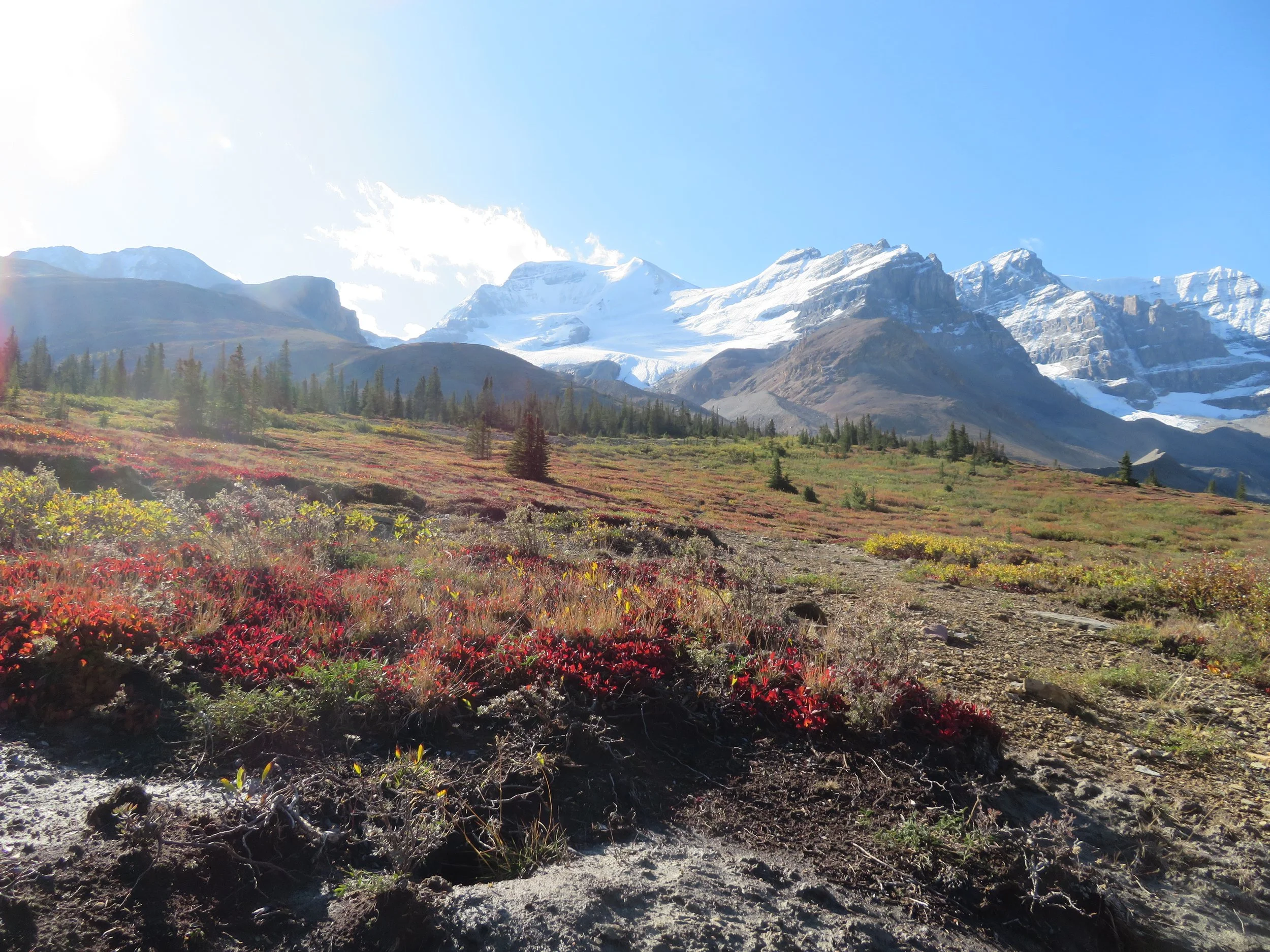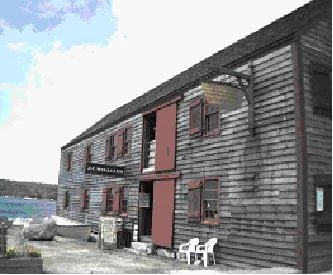America’s Neighbor to the North…
The second largest country in the world by area, Canada extends from the Atlantic to the Pacific and north to the Arctic. It has the longest coastline in the world and more lakes than the rest of the world combined. Its geography is diverse from seashore to rugged mountains to prairies to lush forests. Its incredible multicultural population is friendly and welcoming. What’s not to like?
*Canada is the second largest country in the world by area, occupying roughly the northern 40% of North America, but its population is only .05% of the world’s total.
*Its 10 provinces and 3 territories extend from the Atlantic to the Pacific and north to the Arctic.
*Capital: Ottawa
Canada became a self-governing dominion in 1867 while retaining ties to the British crown.
Nine of Cups Visit to Maritime Canada - 2001
Note that the digital camera we used back in 2001 offered low res pics at best. Still, better than nothing.
Campobello Island - 44N58 / 066W54
Head Harbour Light on West Quoddy Head at the Canadian border. We arrived at Campobello Island, New Brunswick summer home of President Roosevelt. We cleared customs here, Made easy by using CanPass for U.S. citizens in private vessels, a toll-free call from a nearby motel cleared us in. Unfortunately, this program has since been discontinued.
Head Harbour was a bit crowded and not very wide. We were told “rafting” was the norm here...no permission needed, just tie up to the most convenient boat. That’s little Nine of Cups, 4th boat out, rafted to the fishing trawler, Miss Hope. With the huge tidal changes and fixed docks, we found the ascent to the top of the wharf at low tide to be about a 20’ slimy, vertical climb.
The Bay of Fundy boasts the highest tides in the world. Each day 100 billion tons of seawater flow in and out of the Bay of Fundy during one tide cycle ... more than the combined flow of all the world’s freshwater rivers! Burntcoat Head in Minas Basin holds the world’s record for the highest tide at 54 feet. The biggest tidal differential we saw was about 35 feet which was enough for us. It posed a whole new set of complications when anchoring.
Old Sow Whirlpool is the largest tidal whirlpool in the
Western Hemisphere and is located off the southwestern shore of Deer Island, New Brunswick, Canada between that island and Moose Island, the principal island of Eastport, Maine. According to popular etymology, the name "Old Sow" is derived from "pig-like" noises the whirlpool makes when churning. Anticipating being sucked down into the abyss, we approached with caution at high slack tide
and made it through without any difficulty.
From Campobello, we headed to St. Andrews-by-the-Sea, Canada’s oldest seaside resorttown located on the New Brunswick coast. When we arrived, we had lots of water. Just afew hours later, the markers were laying in mud.
St.Andrews-by-the-sea, New Brunswick, Canada - 45N04.19 / 067W03.14
Cups on a moored off the wharf
St. Andrews town square
We visited Kingsbrae Gardens on one of our forays ashore. One of the top ten Public Gardens in Canada, it is fashioned after the Kew Gardens in England.
Jelly, our ship’s cat, had a near-fatal adventure in Charleston, SC. when she was chased off the pier and into the drink by some stray dogs . She was rescued by Andy, a crewman on the schooner, “Avontuur”. Small world that it is, we accidentally met Andy in the laundromat one day in St. Andrews, recognized him and finally had the opportunity to thank him properly. Read the whole story here, Jelly's Hero.
Grand Manan Island, New Brunswick - 44N71 / 066W86
From St. Andrews, back across the Bay of Fundy and to isolated Grand Manan Island. What a treat to find free moorings in the North Head Harbor. There are a couple of shops, a grocery and a ferry terminal here. Grand Manan has dubbed itself the “Dulse Capital of the World”. This reddish, edible seaweed, known locally as 'Dark Harbour' dulse, is hand-picked at low tide on the western side of the island. We tried it the way most islanders prefer it, as a snack food, fresh-dried and eaten with the fingers. It's an acquired taste!
From Grand Manan, we sailed across the Bay of Fundy to Yarmouth, Nova Scotia. We had visited this pretty little port during the summer of 2000 via “The Fast Cat” and it was fun coming back under our own power. We enjoyed a small dinner theatre production and wandered around town. We were able to pick up more Canadian charts for Nova Scotia as well as A Cruising Guide to Nova Scotia: Digby to Cape Breton Island, Peter Loveridge (1997). From Yarmouth, we moved to Nova Scotia’s southeastern shore. What a delight! Our first stop…Shelburne, a Loyalist town founded in 1783. Loyalists were those loyal to Britain during our Revolutionary War who fled from the U.S. to Canada after the war.
Shelburne, Nova Scotia - 43N75 / 065W32
We anchored in Shelburne Harbour and were officially welcomed and greeted by the “Ambassador”, Harry O’Connor, who has supposedly welcomed thousands of boats to Shelburne over the years. Above, the Shelburne Dory Shop where they still make custom dories to this day.
A much younger Marcie and David in our second year aboard Nine of Cups.
From Shelburne to Lunenburg. The picturesque nature of these towns is unbelievable. Each town has some unique aspect to share including museums illustrating their maritime past. The Canadians are warm and welcoming and proud to share their history and culture with us.
We visited The Fisheries Museum of the Atlantic while in Lunenburg. It’s a fascinating place. We had the opportunity to board and tour a large fishing trawler as well as a Grand Banker. The displays were excellent and included an interesting exhibit on the rumrunners who found running illegal liquor into the U.S. much more profitable than fishing. Some trivia: The term rum-running is more commonly applied to smuggling over water; bootlegging is used to designate smuggling over land.
Armdale YC Marina, Halifax, Nova Scotia - 44N37.59 / 063W36.47
From Lunenburg, we sailed to Halifax, Nova Scotia’s provincial capital. We anchored first at the yacht club outside of town, but ended up moving to an anchorage right in the harbor across from the city so we could dinghy across the harbor to the dinghy dock to explore the town.
Probably our fondest memory and souvenir of Halifax is the photo we took of a seahorse gate which David massaged and subsequently turned into our ship's logo.
We contemplated heading through the Canso Passage to Prince Edward Island or going farther east and north to Cape Breton or even further north to Newfoundland, but it was August now and the summer was ending all too quickly. Time to head back to the U.S. We had missed several scenic spots on our way to Halifax so stopped on our way back west. We hurried along now. Rogue's Roost, Chester, Mahone’s Bay, Lehave and then the big push overnight to Rockland, Maine where we cleared back into the USA.
We had visited Canada by plane and car several times in the past for both business and pleasure, but visiting by boat was so very different. We saw so little of this wonderful country ... mere glimpses of Nova Scotia and New Brunswick. What we did see was fantastic and the thought of remaining here for another season crossed our minds, but only for a moment, then the days became shorter and we could see our breath in the morning


























